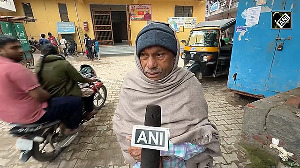Objects like a webcam could be connected to a virtual monitor or a real electric appliance to a virtual switch, according to a project conceived during an internship programme for students of top-notch technical and business schools at IBM India Software Lab.
The project enhances the possibilities of the three- dimensional online virtual world - Second Life - developed by San Francisco-based Linden Lab and opened for the public in 2003.
Over the years, the popularity of Second Life has grown exponentially among Internet users with over eight million 'residents' across the globe.
In Second Life, Internet users can interact with each other and can buy and sell services through their 'avataars'.
"As per the new project, the interface will allow users in the virtual world to experience objects in the real world through a new and exciting Rich Immersive Environment," Benjamin Chodroff of Case Western Reserve University in the US, who came up with the idea during the recently held internship programme, told PTI.
The new idea has many applications and will enhance both the virtual world and the real world with rich connectivity and on-demand-access from any part of the globe, he added.
Chodroff, one among the 30 students from various top technical and business schools who attended the 12-week programme, 'Extreme Blue', hopes to find his project developed and marketed with the help of IT major IBM.
According to Amol Mahamuni, programme director, IBM India Software Lab, Extreme Blue team members, during their 12-week internship, develop innovative projects along with marketing plan for an emerging business opportunity in areas that include business on demand, grid computing, pervasive computing and Linux.
The programme also brought forth some new innovative projects like 'Dynamic Power Management', which would help plan the quantum of power to be used by data centres, thereby preventing wastage of energy.
Another project - an automatic planning tool for distributed and overlapping projects - was well-received by IBM executives, mentors, sponsors and peers during an expo
held as part of the programme, said Mohit Gupta of NIT, Warangal, who along with Anupama Mridul of IIT, Roorkee, developed the project.
"The internship intends to cultivate innovative thinking among the talented students and encourages them to come up with out-of-the-box ideas to meet emerging business needs while assessing the market feasibilities," said Mahamuni.
According to Nithika Nathani of IIT, Roorkee, the internship provided a 'start-up environment' and guidance of some of the best 'technical mentors' in the industry.
IBM, US started the Extreme Blue programme in 1999 whereas IBM India has been conducting it since 2004. The company has helped the students develop many of the innovative ideas put forth by them.
One such project, 'Productivity Enhancement Tool' was being successfully used internally by the software major.
The company has absorbed many of the participants, in addition to enrolling them in the Extreme Blue Alumni Networking Group.
IBM, which had been picking up talents from elite schools, also plans to reach out to other leading institutes.






 © 2024 Rediff.com -
© 2024 Rediff.com -